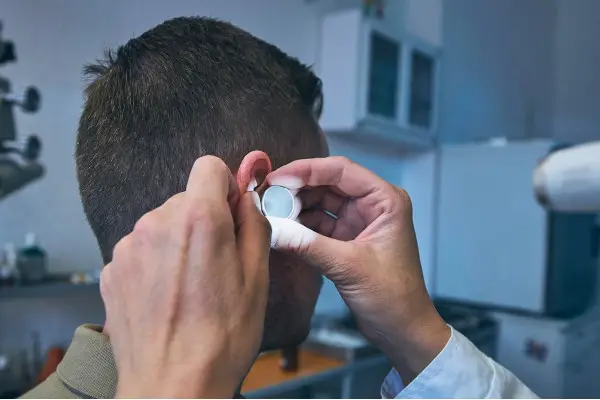Introduction
Sensorineural hearing loss (SNHL) is an auditory impairment that affects millions of individuals worldwide. The onset of this condition often ushers in a whirlwind of physiological changes, psychological impact, and adaptations to daily routines and interactions. However, the study of SNHL isn’t restricted to its medical facets; its profound influence on the affected individuals’ emotional state, lifestyle, and relationships offers a compelling area of study that warrants meticulous examination.
In this analytical piece, we will examine the multifaceted effects of SNHL, drawing upon personal narratives, exploring the emotional toll, linking SNHL and quality of life, and delving into various coping strategies. Additionally, we will take an academic look into the role of support groups, the challenges faced in employment, and the nuanced impacts on family dynamics, offering an extensive view of the intricate world woven by SNHL.
Our exploration aims to provide an academic and empathetic understanding of the labyrinth that is SNHL, arming readers with information and insights into navigating the journey that SNHL often marks. This endeavor requires a deep dive into both statistical analysis and human stories, as both together form the foundation of a comprehensive understanding of living with SNHL.
Tinnitus: why it’s still such a mystery to science
Living with Sensorineural Hearing Loss Personal Stories
Personal narratives provide a window into the lived experiences of individuals with sensorineural hearing loss. They encapsulate the journey of diagnosis, the realization of the condition, the adaptation to new realities, and the resilience exhibited in the face of challenges. One such story is that of James, a music teacher who first noticed changes in his hearing when he was unable to differentiate the subtle nuances in the piano notes. Another narrative that stands out is of Susan, a mother of two, who struggled with the inability to hear her children’s laughter and the nuances of their voices.
These stories present the broad spectrum of SNHL, illustrating that the condition’s impacts vary significantly across individuals. Some individuals like James and Susan express feelings of loss, frustration, and isolation initially. However, they also narrate their journey towards acceptance, their efforts to adapt and their determination to not let SNHL dictate their life. James, for instance, found solace in teaching music theory and composition, while Susan took on the challenge head-on, using hearing aids and speech-reading to better communicate with her children. Through their stories, we understand that living with SNHL isn’t about the loss of a sense, but about finding new ways to experience the world.
OTC Hearing Aid Pair
Experience the world like never before with the RCA OTC Behind-the-Ear Hearing Aid. Our advanced digital technology ensures that every sound is crystal clear and vibrant, allowing you to fully immerse yourself in life’s experiences. Whether it’s the laughter of loved ones or the music that moves you, our hearing aid brings back the joy of every moment.
Say goodbye to the hassle of appointments and prescriptions. The RCA OTC Hearing Aid is designed to meet the needs of individuals without the need for a prescription. With its seamless setup and user-friendly design, you can effortlessly enhance your hearing abilities and stay connected to the world around you. Simply unpack, wear, and enjoy improved auditory perception instantly.
Experience optimal comfort and style with our discreet behind-the-ear design. The thin tube design allows you to wear glasses comfortably, so you can enjoy clear hearing while maintaining your personal sense of style. Plus, our rechargeable battery ensures long-lasting power, eliminating the inconvenience of constantly replacing small batteries. Elevate your hearing experience with the RCA OTC Hearing Aid and embrace the world with confidence.
Emotional Impact of Sensorineural Hearing Loss A Deep Dive
The emotional impact of sensorineural hearing loss is profound and pervasive, permeating various aspects of an individual’s life. For many individuals, SNHL can trigger feelings of frustration, sadness, anger, and at times, a profound sense of loss. Research has indicated that individuals with SNHL are more likely to experience emotional distress and have a higher prevalence of anxiety and depression compared to the general population.
However, the emotional impact of SNHL isn’t static or one-dimensional. It’s an evolving narrative that transforms over time, shaped by factors such as the individual’s resilience, support system, access to hearing aids, and coping strategies. Studies have found that emotional well-being improves over time for many individuals with SNHL, especially those who proactively seek support and use assistive devices. Hence, while the emotional impact of SNHL is undeniably significant, it isn’t an immutable reality, a point that brings a glimmer of hope amidst the challenges.
Sensorineural Hearing Loss and Quality of Life The Undeniable Link
The effects of sensorineural hearing loss (SNHL) extend beyond the realm of auditory perception, significantly influencing individuals’ quality of life. This link is substantiated by numerous studies indicating a decrease in life satisfaction, higher stress levels, and reduced participation in social activities among those with SNHL.
Moreover, the influence of SNHL on quality of life isn’t limited to the affected individuals. There is a ripple effect on family, friends, and caregivers, altering their lifestyle, communication patterns, and emotional state. The transformative effects of SNHL on individuals’ lives underscores the need for comprehensive strategies for its management, encompassing not just hearing aids and medical interventions but also psychological support and lifestyle adaptations.
Adapting to Life with Sensorineural Hearing Loss Coping Strategies
Living with SNHL demands substantial adaptation and the development of coping strategies. These strategies can range from using assistive listening devices and learning lip-reading, to seeking professional help from audiologists and psychologists, to making lifestyle adjustments. For instance, many individuals with SNHL choose to sit in a specific place during gatherings to facilitate better understanding of conversations or limit background noise.
Another effective strategy is embracing self-advocacy. By understanding their condition better, individuals with SNHL can articulate their needs to their family, friends, and coworkers, fostering an environment of empathy and support. Additionally, resilience and a positive outlook significantly contribute to better coping with SNHL. Together, these strategies underscore that living with SNHL is not just about managing hearing loss but also about orchestrating a fulfilling and meaningful life amidst the challenges.
Deafness: A Journey of Challenges and Triumphs
The Role of Support Groups in Managing Sensorineural Hearing Loss
Support groups play a pivotal role in managing SNHL. They provide a platform for individuals to share their experiences, vent their frustrations, learn coping strategies, and more importantly, understand that they are not alone in their journey. The shared experiences within these groups often foster a sense of belonging, reducing feelings of isolation and stigma associated with SNHL.
Moreover, the collective wisdom and experiential knowledge within these groups often serve as a valuable resource for new members grappling with their diagnosis. Hence, the role of support groups extends beyond providing emotional comfort; they also act as a hub for practical tips, medical information, and valuable advice. They stand as a testament to the power of shared experiences and collective resilience in navigating the journey of SNHL.
Employment Challenges for Individuals with Sensorineural Hearing Loss
Navigating the professional landscape with sensorineural hearing loss presents unique challenges. Individuals often face obstacles related to communication, discrimination, and limited job opportunities. Communication challenges can arise due to background noise, group conversations, or meetings, especially in roles that demand constant interpersonal interactions.
Moreover, despite legislation prohibiting discrimination against individuals with disabilities, subtle biases may exist, leading to disparities in hiring, promotions, and compensation. While these challenges may seem daunting, it’s crucial to note that they aren’t insurmountable. Many organizations are increasingly acknowledging the importance of inclusivity and providing accommodations such as flexible work schedules, assistive technologies, and awareness training to their employees.
How Sensorineural Hearing Loss Affects Family Dynamics
The impact of sensorineural hearing loss is not confined to the individual diagnosed with the condition; it also extends to their family. Family dynamics can be significantly influenced by a member’s SNHL. Communication styles may need to adapt, roles may shift, and emotions can run high, especially during the initial adjustment period.
However, these changes can also foster empathy, resilience, and tighter bonds within the family. For instance, children of parents with SNHL often develop exceptional emotional sensitivity and adeptness at non-verbal communication. Spouses and partners can find new avenues of connection that aren’t dependent on verbal communication. Despite the initial challenges, families often find a way to redefine their dynamics that accommodates and respects the experiences of their member with SNHL.
Conclusion
As our analysis has shown, sensorineural hearing loss weaves a complex narrative that extends beyond the realm of auditory perception. The condition touches every facet of life, demanding adaptation, resilience, and a transformative outlook on the part of the individuals affected and their support system.
The emotional impact is profound, as are the effects on quality of life. Yet, amidst the challenges, individuals find innovative ways to cope, evolve, and thrive, often drawing upon the support of others grappling with similar experiences. Employment challenges and altered family dynamics further underscore the pervasive influence of SNHL.
However, in exploring the depths of the challenges, we also glimpse the remarkable resilience that individuals exhibit in the face of adversity. Their stories remind us that while SNHL is a significant part of their lives, it doesn’t define them. Instead, their spirit, strength, and continual adaptation reflect their identity, painting a picture of resilience and adaptability in the face of SNHL.
This exploration underlines the necessity of a comprehensive approach to managing SNHL, one that addresses the medical, psychological, and socio-cultural aspects of the condition. As we move forward, it’s crucial to continue these multifaceted explorations, fostering a holistic understanding of SNHL that can guide research, policy-making, and the delivery of care and support to the millions navigating their lives with SNHL.






